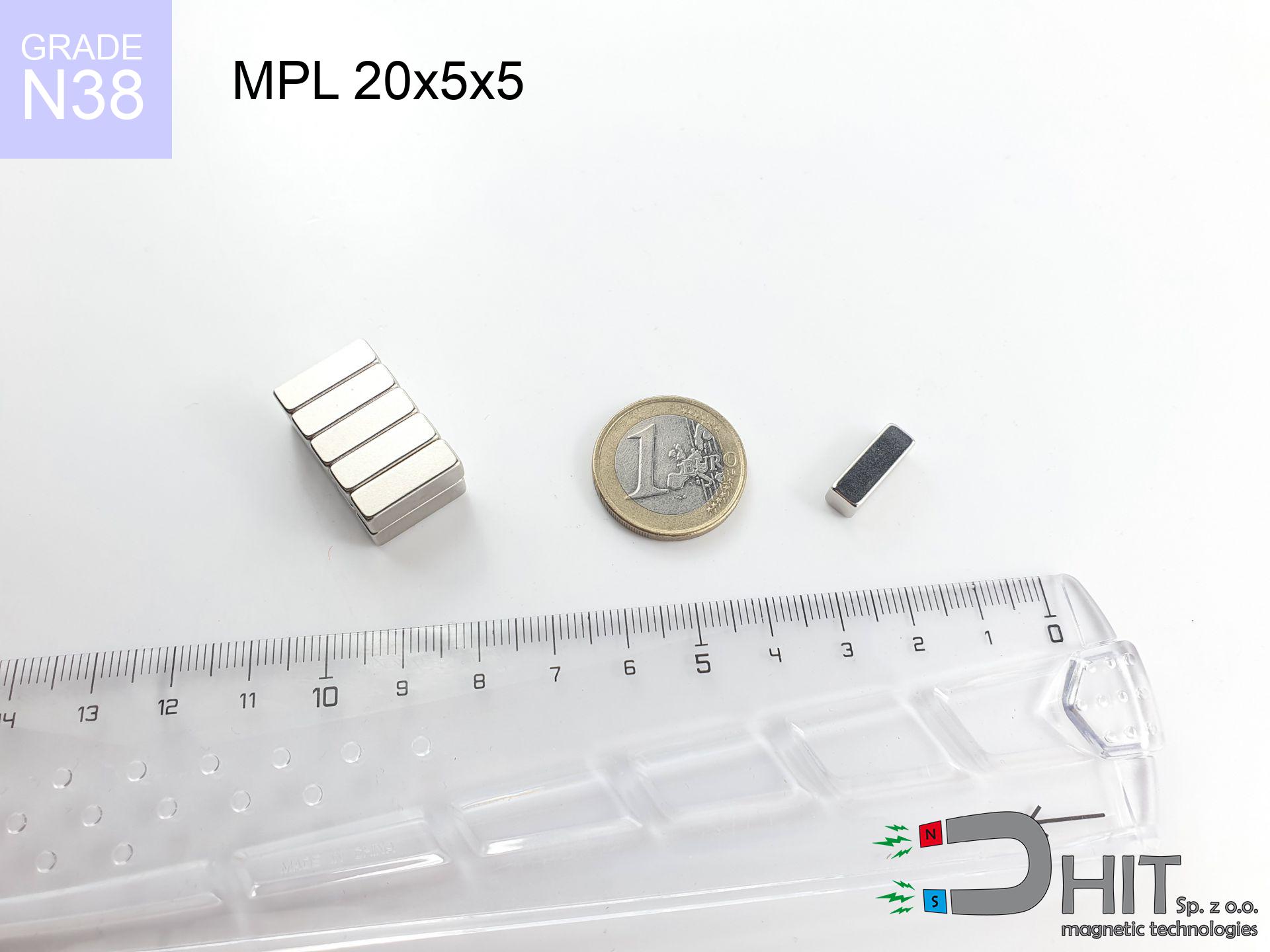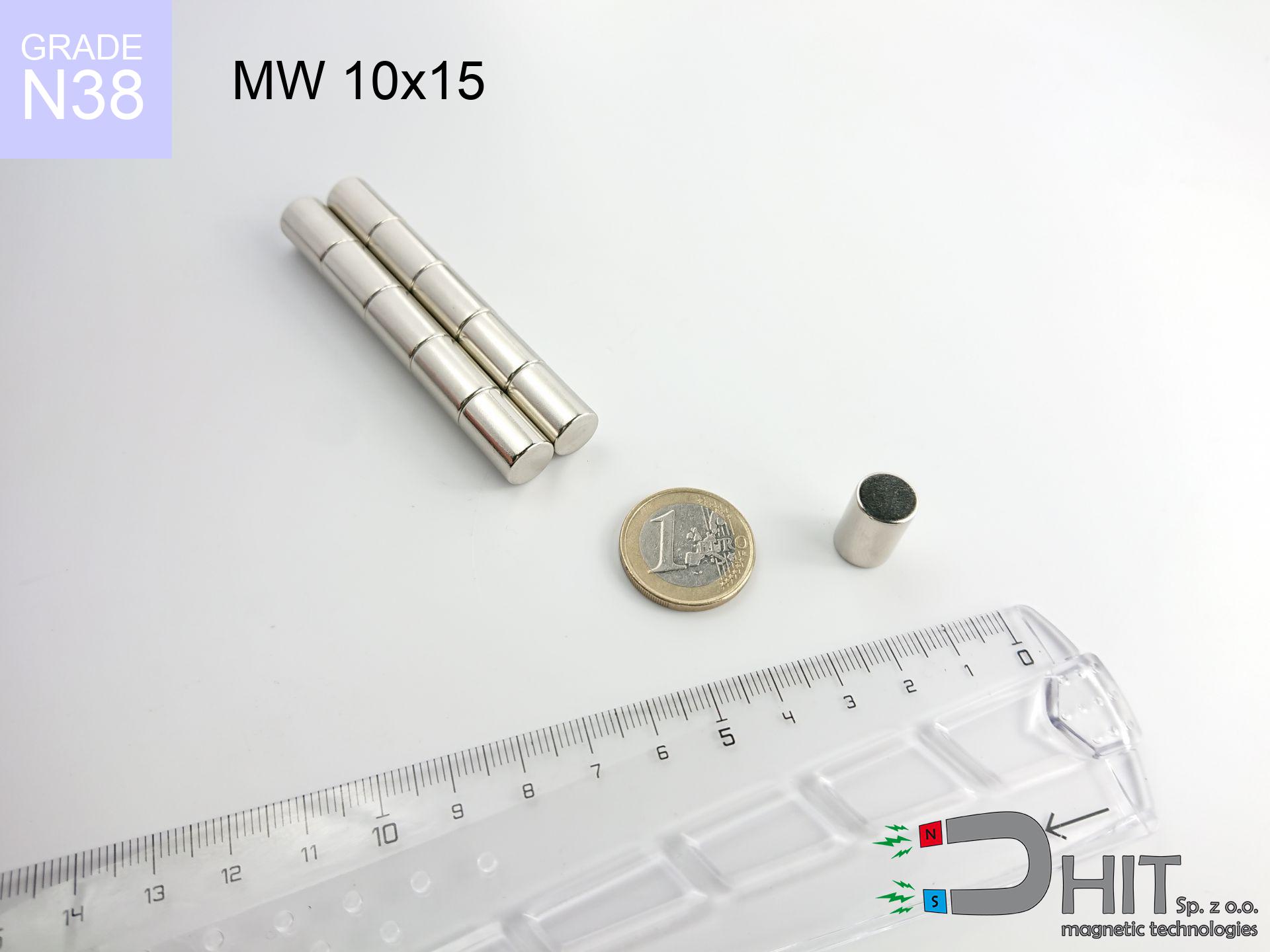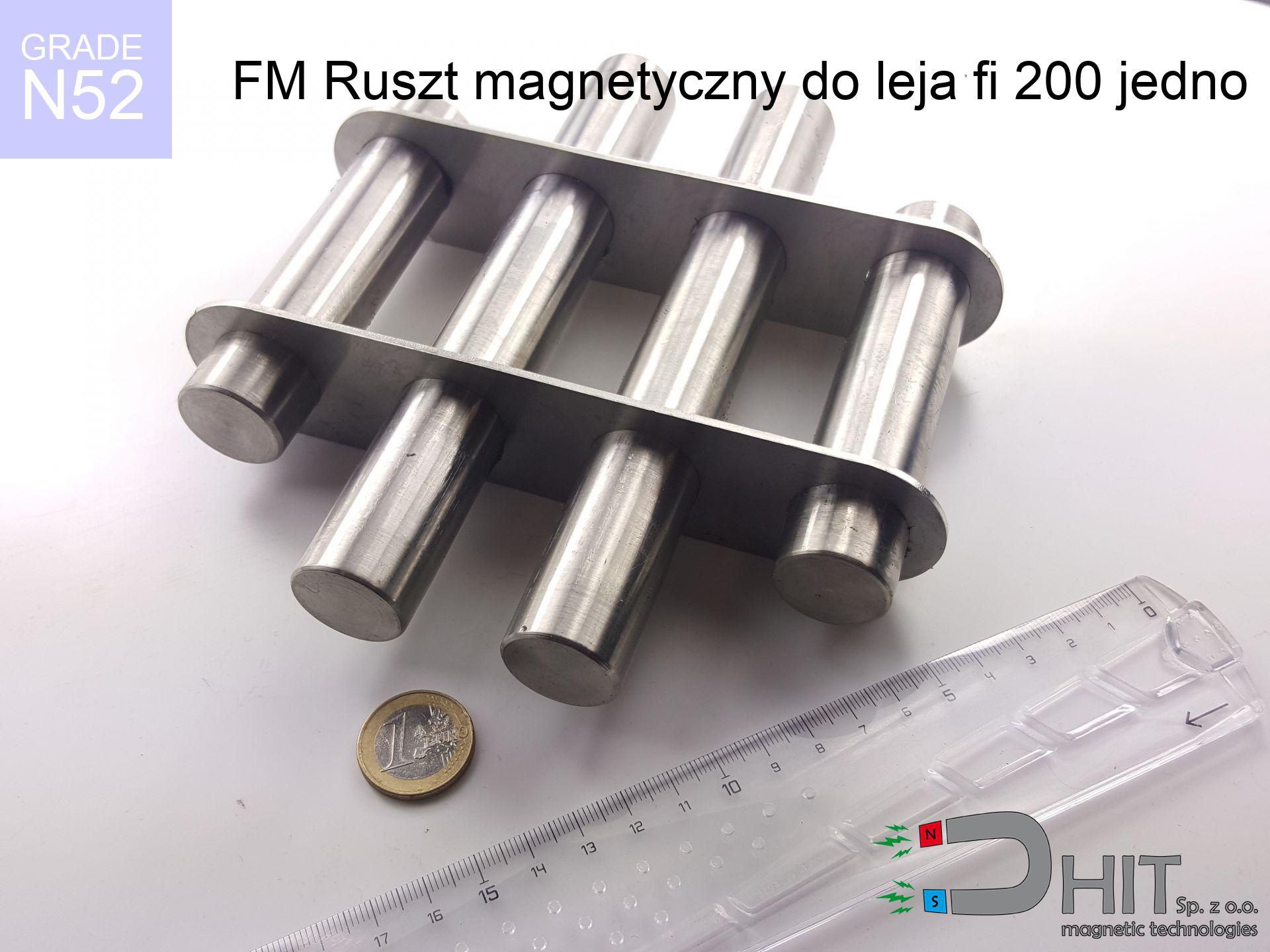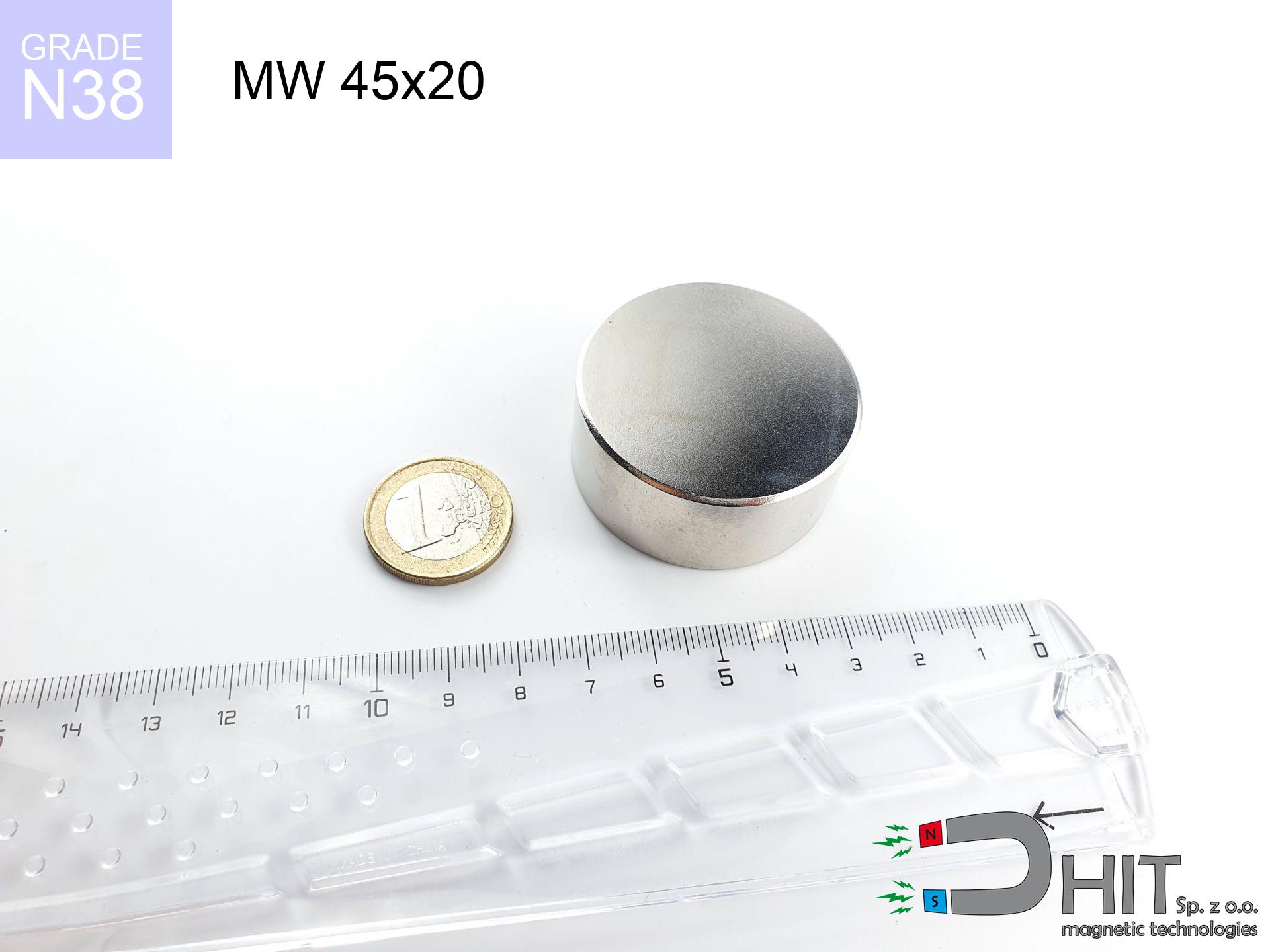MW 25x5 / 38AH - neodymium magnet
cylindrical magnet
catalog number 010501
diameter Ø
25
mm [±0,1 mm]
height
5
mm [±0,1 mm]
magnetizing direction
↑ axial
capacity ~
6.91 kg / 67.76 N
magnetic induction ~
219.99 mT / 2,200 Gs
max. temperature
≤ 230
°C
catalog number 010501
diameter Ø
25 mm [±0,1 mm]
height
5 mm [±0,1 mm]
magnetizing direction
↑ axial
capacity ~
6.91 kg / 67.76 N
magnetic induction ~
219.99 mT / 2,200 Gs
max. temperature
≤ 230 °C
15.14 ZŁ gross price (including VAT) / pcs +
12.31 ZŁ net price + 23% VAT / pcs
bulk discounts:
need more quantity?Want to bargain?
Call us tel: +48 22 499 98 98 or contact us through contact form on the contact page. You can check the mass and the appearance of neodymium magnets in our magnetic mass calculator magnetic mass calculator
Orders placed by 2:00 PM will be shipped on the same business day.
Specification: cylindrical magnet 25x5 / 38AH ↑ axial
Magnetic properties of the material 38AH
Physical properties of sintered neodymium magnets Nd2Fe14B
Moreover, even though neodymium is a component of the strongest magnets, they are prone to corrosion in humid environments. Therefore, they are coated with a coating of epoxy to protect them from corrosion. Interestingly that NdFeB neodymium magnets are about 13% lighter than SmCo magnets and, despite their power, easily break, which requires special caution during their handling. For this reason, any mechanical processing should be done before they are magnetized.
In terms of safety, there are several recommendations regarding the use of these magnets. They should not be used in acidic, basic, organic environments or in solvents, and also in water or oil. Additionally, they can damage data on magnetic cards and hard drives, although data deletion using a neodymium magnet is not always certain.
In terms of properties in different environments, neodymium magnets are sensitive to corrosion, especially in humid conditions. Therefore, they are often coated with coatings, such as silver, to protect them from external factors and extend their lifespan. Temperatures exceeding 130°C can cause a deterioration of their magnetic strength, although there are particular types of neodymium magnets that can withstand temperatures up to 230°C.
As for dangers, it is important to avoid using neodymium magnets in acidic environments, basic environments, organic or solvent environments, unless they are properly protected. Additionally, their use is not recommended in wet conditions, oil, or in an atmosphere containing hydrogen, as they may lose their magnetic properties.
Compilation of suggested goods
Advantages as well as disadvantages of neodymium magnets NdFeB.
Apart from immense power, neodymium magnets have the following advantages:
- They do not lose strength over time - after 10 years, their power decreases by only ~1% (theoretically),
- They are extremely resistant to demagnetization by external magnetic sources,
- In other words, thanks to the shiny coating of nickel, gold, or silver, the element acquires an aesthetic appearance,
- They have exceptionally high magnetic induction on the surface of the magnet,
- Thanks to their high temperature resistance, they can operate (depending on the form) even at temperatures up to 230°C and above...
- Due to the option of accurate forming or adaptation to individual needs – neodymium magnets can be produced in many variants of shapes or sizes, which amplifies their universality in usage.
- Wide application in the industry of new technologies – are used in HDD drives, electric motors, medical equipment and very advanced devices.
Disadvantages of neodymium magnets:
- They are fragile when subjected to a strong impact. If the magnets are exposed to impacts, we recommend using magnets in a steel housing. The steel housing in the form of a holder protects the magnet from impacts, and at the same time increases its overall strength,
- They lose strength at high temperatures. Most neodymium magnets experience permanent loss of strength when heated above 80°C (depending on the shape and height). However, we also offer special magnets with high temperature resistance, up to 230°C,
- Due to their susceptibility to corrosion in a humid environment, we suggest using waterproof magnets made of rubber, plastic, or other moisture-resistant materials when using them outdoors,
- The use of a cover or a magnetic holder is recommended due to the limited possibilities of manufacturing threads or complex shapes in the magnet
- Health risk arising from small pieces of magnets are risky, when accidentally ingested, which is particularly important in the context of child safety. Furthermore, miniscule components of these magnets are able to be problematic in medical diagnosis after entering the body.
Precautions
It is crucial not to allow the magnets to pinch together uncontrollably or place your fingers in their path as they attract to each other.
Magnets may crack or alternatively crumble with uncontrolled joining to each other. You can't move them to each other. At a distance less than 10 cm you should have them very strongly.
Neodymium magnets are the strongest magnets ever created, and their power can shock you.
Please review the information on how to handle neodymium magnets and avoid significant harm to your body, as well as prevent unintentional disruption to the magnets.
Neodymium magnets can demagnetize at high temperatures.
Although magnets are generally resilient, their ability to maintain their magnetic potency can be influenced by factors like the type of material used, the magnet's shape, and the intended purpose for which it is employed.
The magnet coating contains nickel, so be cautious if you have a nickel allergy.
Studies clearly indicate a small percentage of people who suffer from metal allergies such as nickel. An allergic reaction often manifests as skin redness and rash. If you have a nickel allergy, you can try wearing gloves or simply avoid direct contact with nickel-plated neodymium magnets.
Neodymium magnetic are highly fragile, they easily break as well as can become damaged.
In the event of a collision between two neodymium magnets, it can result in them getting chipped. Despite being made of metal as well as coated with a shiny nickel plating, they are not as hard as steel. In the case of a collision between two magnets, there can be a scattering of small sharp metal fragments in different directions. Protecting your eyes is essential.
Keep neodymium magnets as far away as possible from GPS and smartphones.
Neodymium magnets are a source of intense magnetic fields that cause interference with magnetometers and compasses used in navigation, as well as internal compasses of smartphones and GPS devices.
Under no circumstances should neodymium magnets be placed near a computer HDD, TV, and wallet.
Strong magnetic fields emitted by neodymium magnets can destroy magnetic storage media such as floppy disks, credit cards, magnetic ID cards, cassette tapes, video tapes, or other devices. They can also damage televisions, VCRs, computer monitors, and CRT displays. You should especially avoid placing neodymium magnets near electronic devices.
Neodymium magnets should not be around youngest children.
Not all neodymium magnets are toys, so do not let children play with them. In such a situation, surgery is necessary to remove them. In the worst case scenario, it can result in death.
Dust and powder from neodymium magnets are flammable.
Do not attempt to drill into neodymium magnets. Mechanical processing is also not recommended. Once crushed into fine powder or dust, this material becomes highly flammable.
Neodymium magnets should not be near people with pacemakers.
Neodymium magnets produce strong magnetic fields that can interfere with the operation of a heart pacemaker. Even if the magnetic field does not affect the device, it can damage its components or deactivate the entire device.
Please see the article - What danger lies in neodymium magnets? You will learn how to handle them properly.








